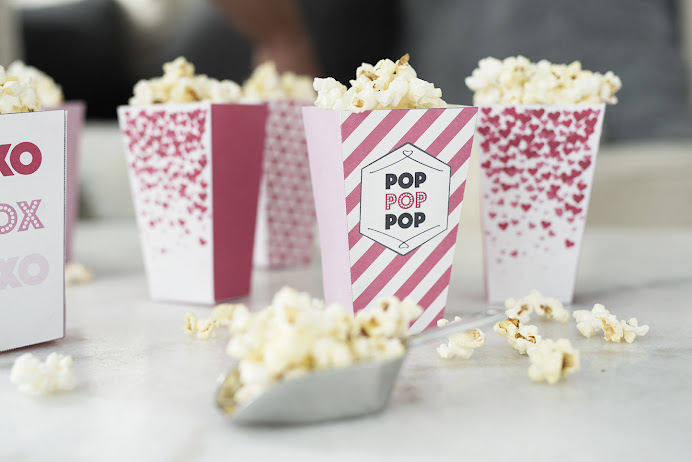The Experience of Going to the Movies is Improved by the Use of Cardboard and Paper Packaging
Let's commemorate National Popcorn Day! After all, the United States consumes more than 15 billion quarts of milk per year, or nearly 45 quarts every man, woman, and child. It's safe to assume that we have a strong relationship with popcorn. According to The Popcorn Institute, 30 percent of those 15 billion quarts are consumed outside of the home, at fairs, stadiums, and, most commonly, movie theaters.
It's possible we had it with the turkey and sweet potatoes for the first Thanksgiving. We'd want to focus on the modern love affair with popcorn and movies.
With award season in full swing and a chilly winter chill in the air, National Popcorn Day arrives at the perfect time of year. Why not have a movie night in to commemorate National Popcorn Day? Also, get a huge bucket of popcorn and cozy up with your favorite movie-going friend.
But how did popcorn and its cardboard pail become such a cinematic staple?
Popcorn was a popular snack offered by sellers on the street as well as at fairs and carnivals around the start of the twentieth century, according to a Slate story quoting Andrew F. Smith's "Popped Culture." However, it wasn't until the Great Depression that movie theaters were forced to add this specific delight to their menus.
Read More:
https://clinkergram.com/blogs/37810/Four-Add-Ons-That-Can-Elevate-Custom-Tea-Boxes-To
https://laurenmaisy.substack.com/p/what-are-the-printing-techniques
https://vapepackaging.hpage.com/blog.html
According to Mental Floss, throughout the 1920s, movie theater owners gave up trying to make the moviegoing experience sophisticated due to the arrival and advent of talkies. They also didn't consider popcorn to be sophisticated. The 1929 stock market crisis, however, changed everything. It didn't matter what kind of business it was, as long as it was profitable. It didn't matter what kind of business it was, as long as it was profitable. Also doing well were merchants selling popcorn outside movie theaters. The theaters, not wanting to miss out on a good concept, brought popcorn into their facilities.
It was successful. For the proprietors, the cost of popcorn was low, and the profit margin was high. “A major reason for this surge was the introduction of popcorn into movie theaters and its inexpensive cost for both patrons and owners,” according to The Popcorn Board. It has remained one of the most profitable concessionary snacks in the industry.
Where, on the other hand, did the popcorn buckets come from? Street sellers and later theater owners primarily sold popcorn in paper bags, but theater owners began to introduce a cardboard bucket at some time, though the exact date is unknown. The crackling sound of the patron's hands constantly reaching into the bags is most likely to reduce noise pollution. Perhaps this is why most movie theater concession stands don't have bags of chips.
Read More:
https://premiumbusinessnews.com/why-is-it-important-to-invest-in-good-quality-bath-bomb-boxes/
Popcorn packaging has undergone a transformation in recent years. COOP, a Danish supermarket, developed a popcorn bag made entirely of bio-based cellulose fibers and paper in 2015, eliminating the need of toxic chemicals.
You can also make your own popcorn bucket or box out of cardboard. There are numerous templates accessible online to help you create your own. Even if you're not crafty, you'll want your own bucket. The boxes are available from a variety of shops online.
To commemorate National Popcorn Day, plan a date with a movie and a favorite bucket-filled snack!


Comments
Post a Comment